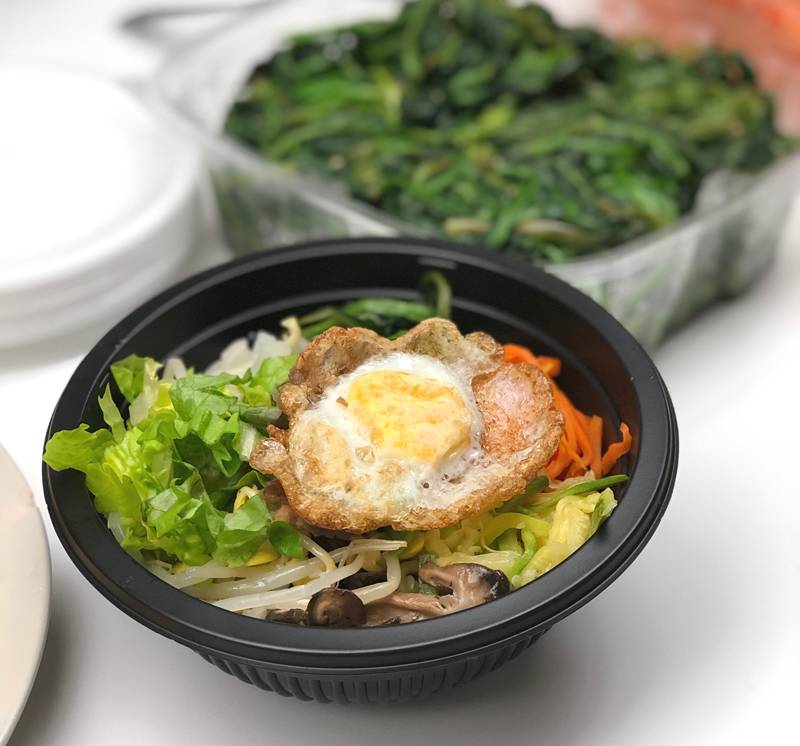Last week, I attended the second in a three-part series on Korean cooking at Japan House. These classes are a partnership between Japan House and Green Onion Asian Market in Champaign, and led by Green Onion manager Lucy Lee. The first class, Intro to Bulgogi, was earlier in February, and the final class in the series (Intro to Vegetable Kimbap, which is a Korean sushi roll) is later this month.
Last week’s class was Intro to Bibimbap. Bibimbap a very popular Korean dish that you’ve probably had before. “Bibim” refers to mixing, and “bap” refers to rice, so the name translates to mixed rice. The dish is rice topped with different cooked vegetables, an egg, and some meat or tofu. Each restaurant serving bibimbap likely serves it just a little differently; because the dish is so popular, it’s easily customizable to families, individuals, and restaurants alike. All Korean meals are served with side dishes (kimchi, fish cakes, pickled radish, etc.), which you’ve encountered if you’ve eaten at a Korean restaurant.
Bibimbap is already one of my favorite Korean dishes because of the large quantity of vegetables and the option for protein, so I was very much looking forward to this class. It’s one of those dishes that I’d never make at home because it’s always so good in the restaurant and seems deceptively simple — I know I’d be disappointed making a subpar version at home.
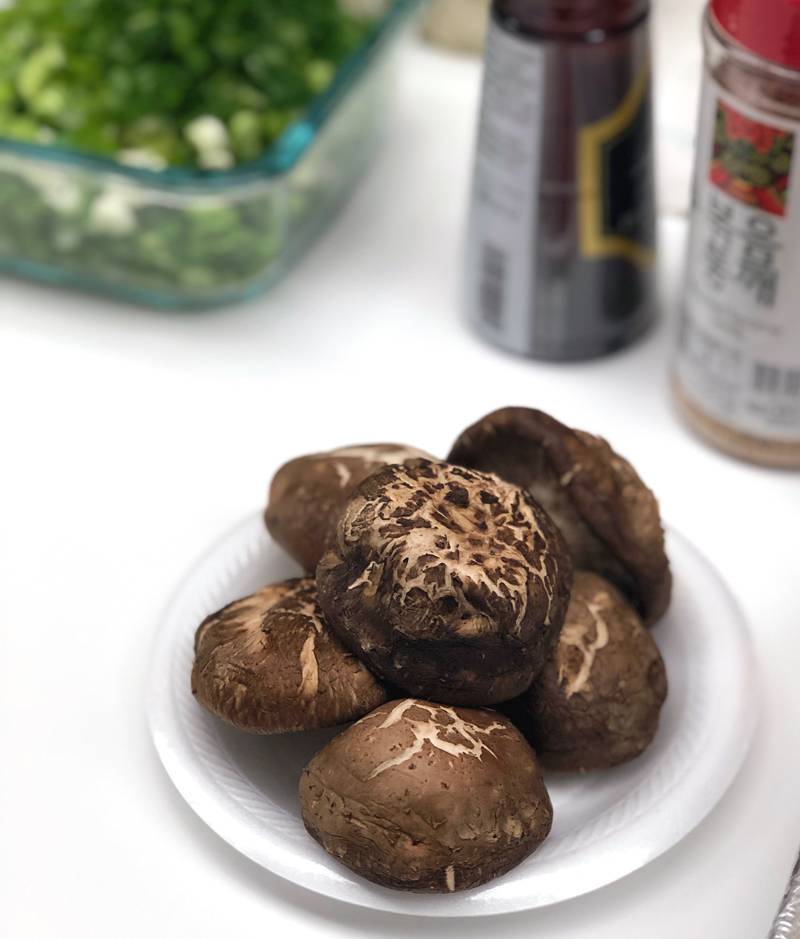
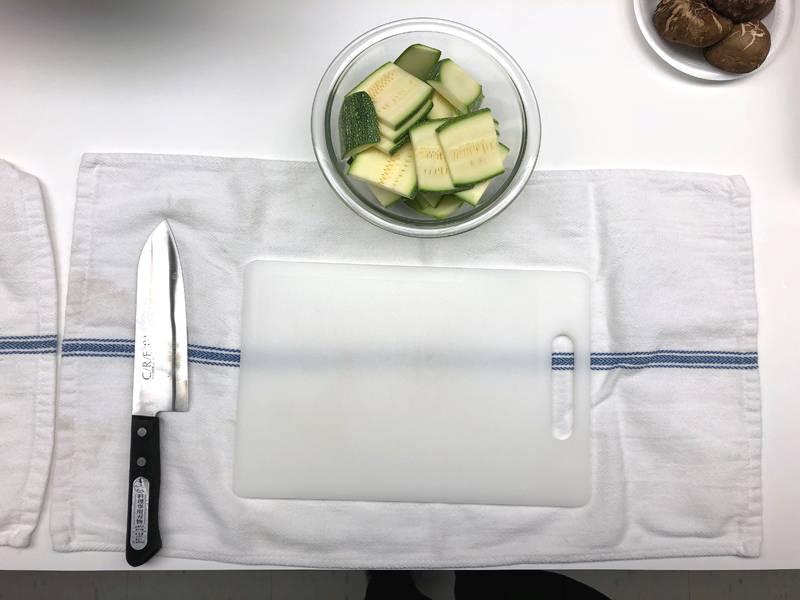
At Japan House, the classes in this series were capped at 12 people. The kitchen space can’t really accommodate more than that, but more importantly, the small class size allowed each participant to actually participate. For this occasion, the island in Japan House’s kitchen was outfitted with a few cutting stations. Instead of cooking at the stove with her back to the class, Lee used an electric skillet so she could face the class and show all of the steps of preparing the bibimbap.
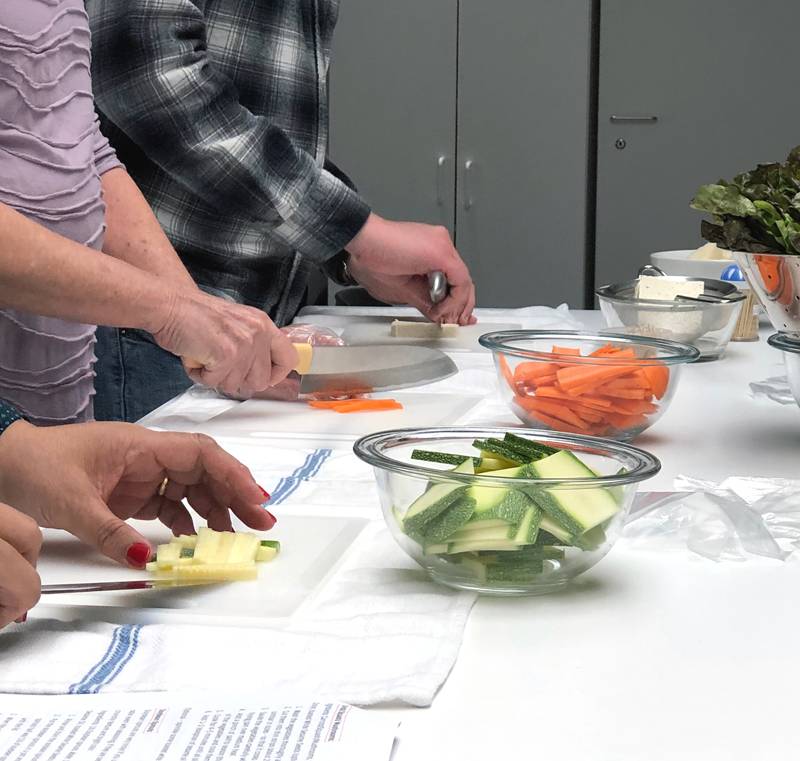
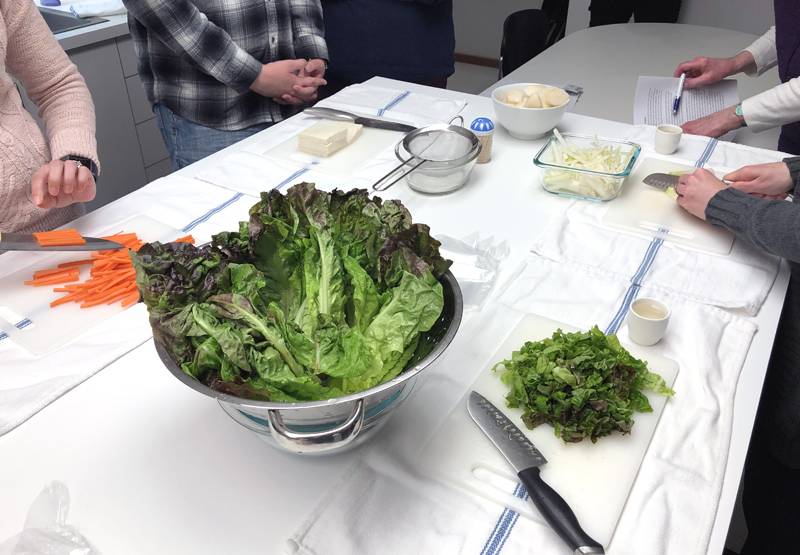
We started with cutting the vegetables: carrots, squash, radish, lettuce, and mushrooms. (The lettuce would not be cooked; it added fresh, crunchy bite to the slightly softer cooked vegetables.) We started by cooking the lightest colored veggies so that they would keep their color — cooking carrots first would leave an orange residue in the pan and turn the other veggies orange.
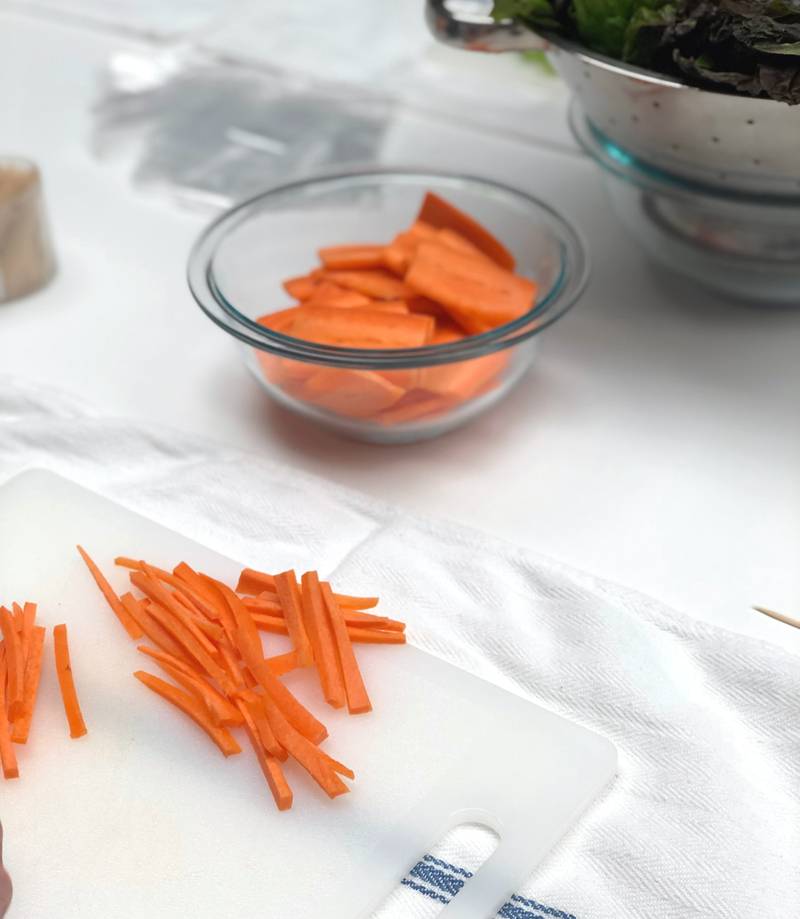
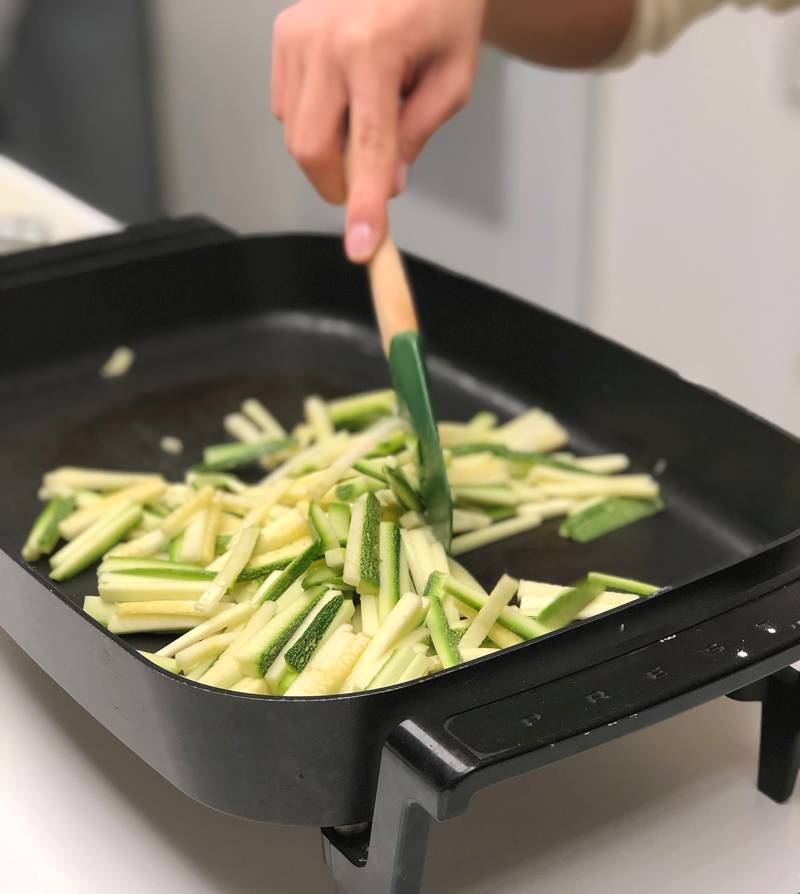
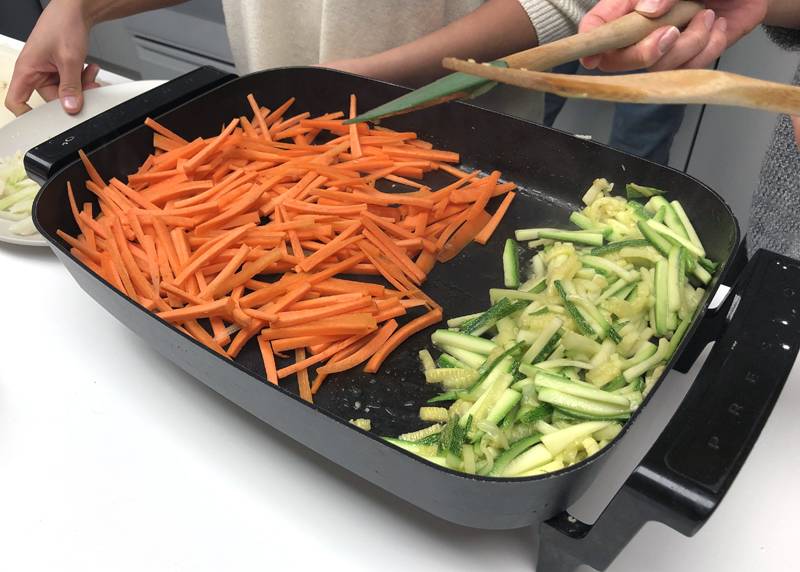
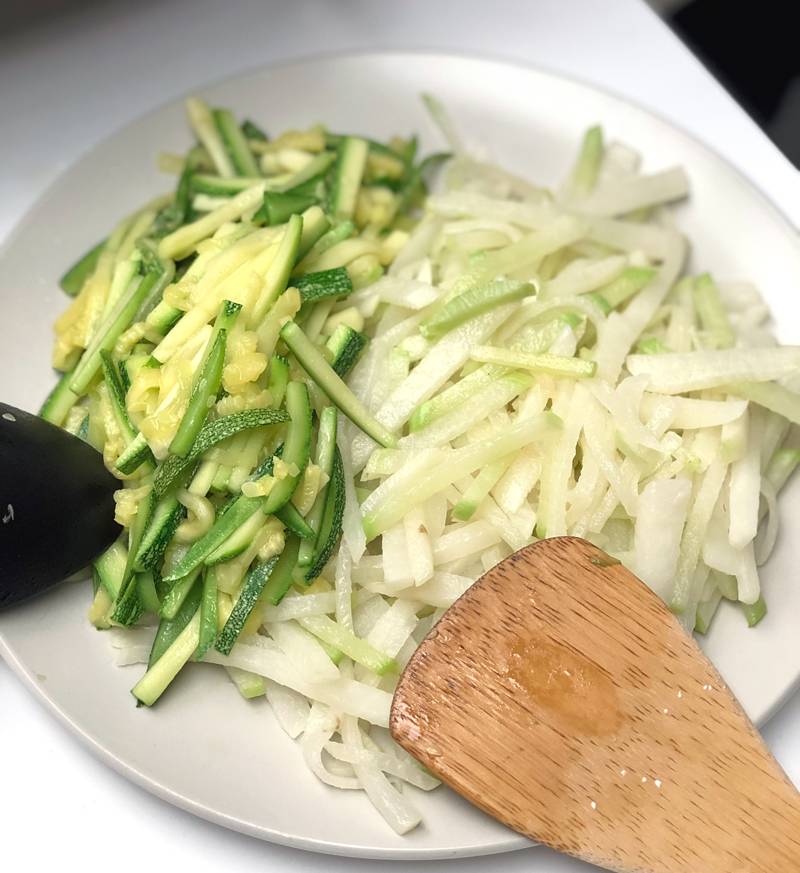
Lee prepared enough food before class so that we could all eat a dish (and take some home). Our cooking demo was just that — a way to familiarize ourselves with the recipe without the stress of cooking for a crowd. Once all the veggies were cooked, we assembled our dishes. Starting with rice and a drizzle of sesame oil, we then put the cooked veggies on top of the rice, alternating them so no two veggies of the same color were next to each other. Next were the proteins: tofu or bulgogi, and a cooked quail egg. A squeeze of spicy/sweet/savory gochujang sauce, and my bowl was ready for eating. We were also served a nice little bowl of broth, and some tea and sake, too. My bibimbap was delicious. Everything was perfectly cooked, and the flavors and textures truly complemented each other. The side dishes that Lee brought along were also excellent.
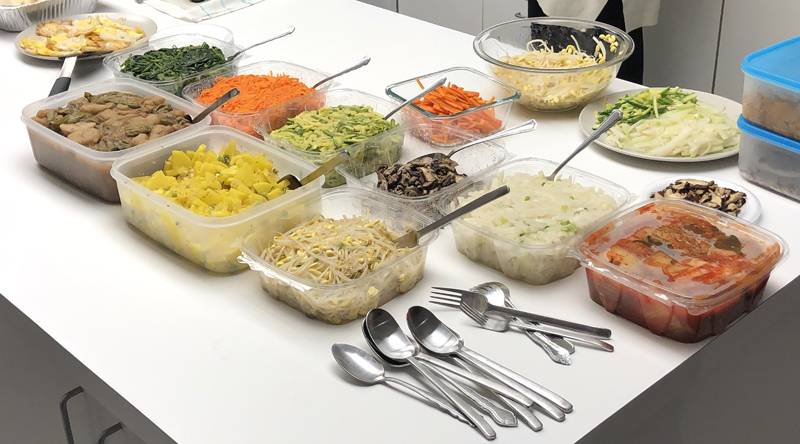
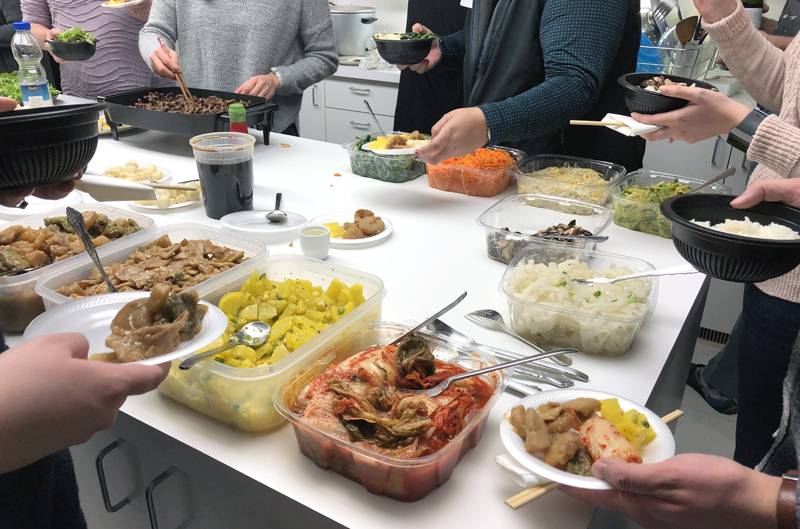
I have zero experience cooking Korean food and limited experience eating it. We’re really lucky in C-U to have several options for Korean cuisine — it’s only since living here that I’ve been exposed to it. Taking this class was incredibly informative and made a dish like bibimbap more accessible to me, a Korean food novice. Now that I’ve seen the dish being made from start to finish, I can refer to the handouts and recipes from the class and my own notes and photos to recreate it at home.
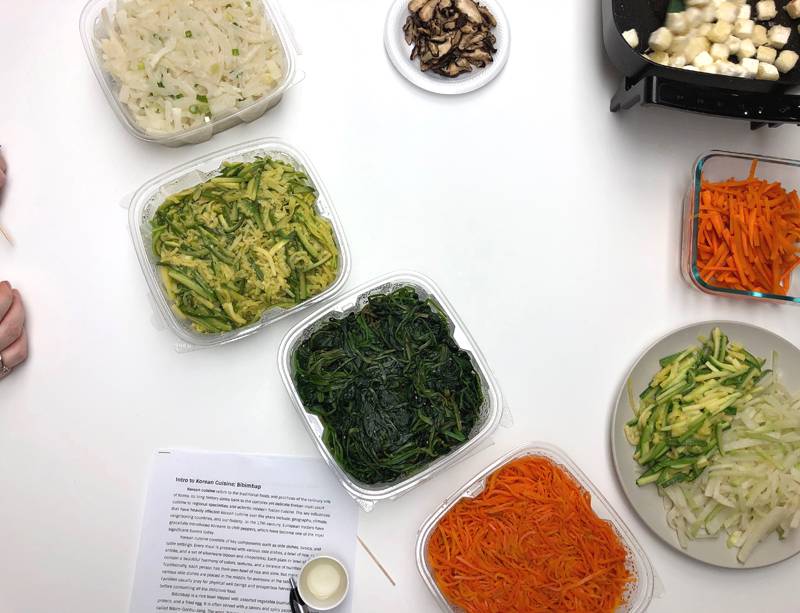
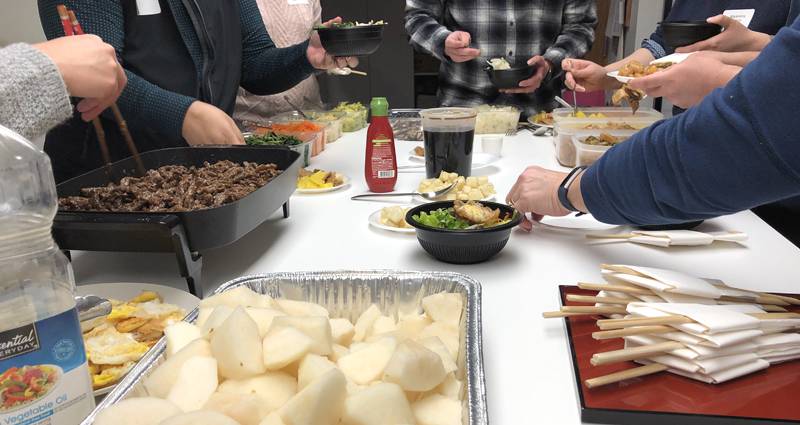
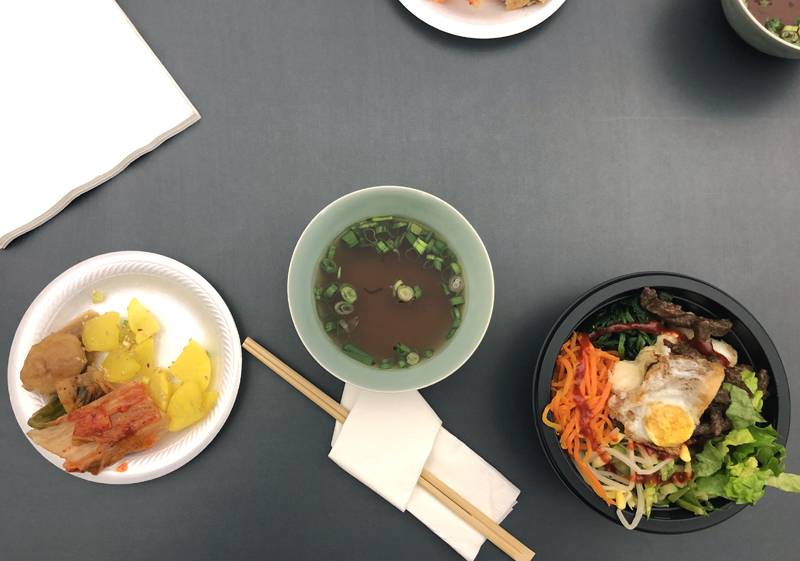
For those of you who are interested in making bibimbap at home, you can stop by Green Onion and purchase the pre-made ingredients. Green Onion even sells bulgogi and marinated pork; basically you just need to make rice and assemble everything. The employees at Green Onion are super helpful and are more than happy to help you find all the things you need to have bibimbap at home if you want to make it from scratch.
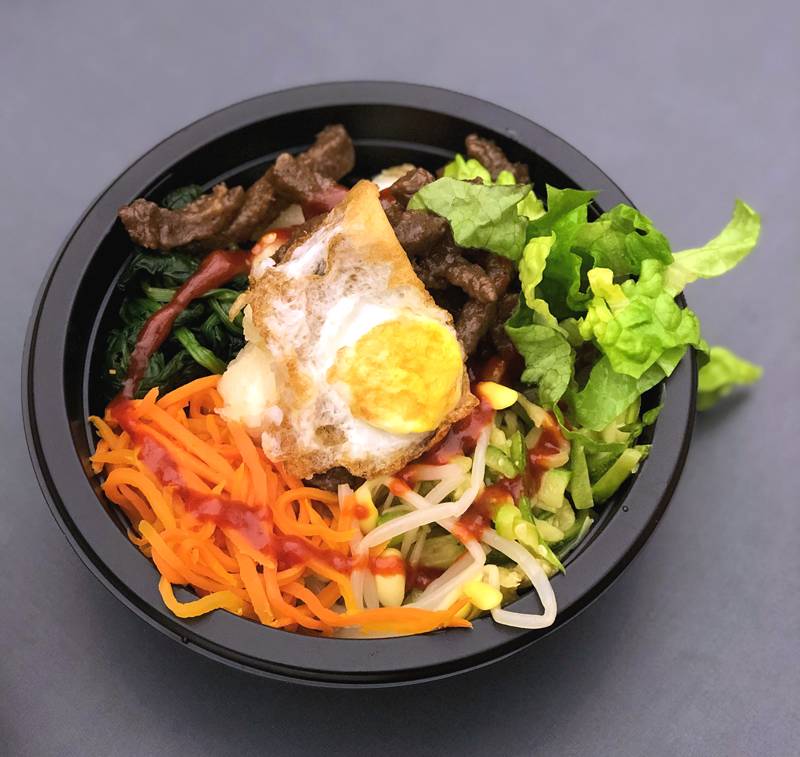
Japan House’s collaboration with Green Onion is awesome. It’s really great to see an institution like Japan House branch out to celebrate the arts and culture and cuisine of Asia more broadly. Because Japan House’s programming is so well established and respected, this collaboration focusing on Korean cuisine feels celebratory. At the sake of sounding cliché and cheesy, it’s really nice. It’s really nice to have these individual elements come together to introduce each other to new audiences. It feels very neighborly, and is good community building. The warm fuzzy feeling I had when I left class last week was not entirely related to the heaping amount of hot sauce on my bibimbap.
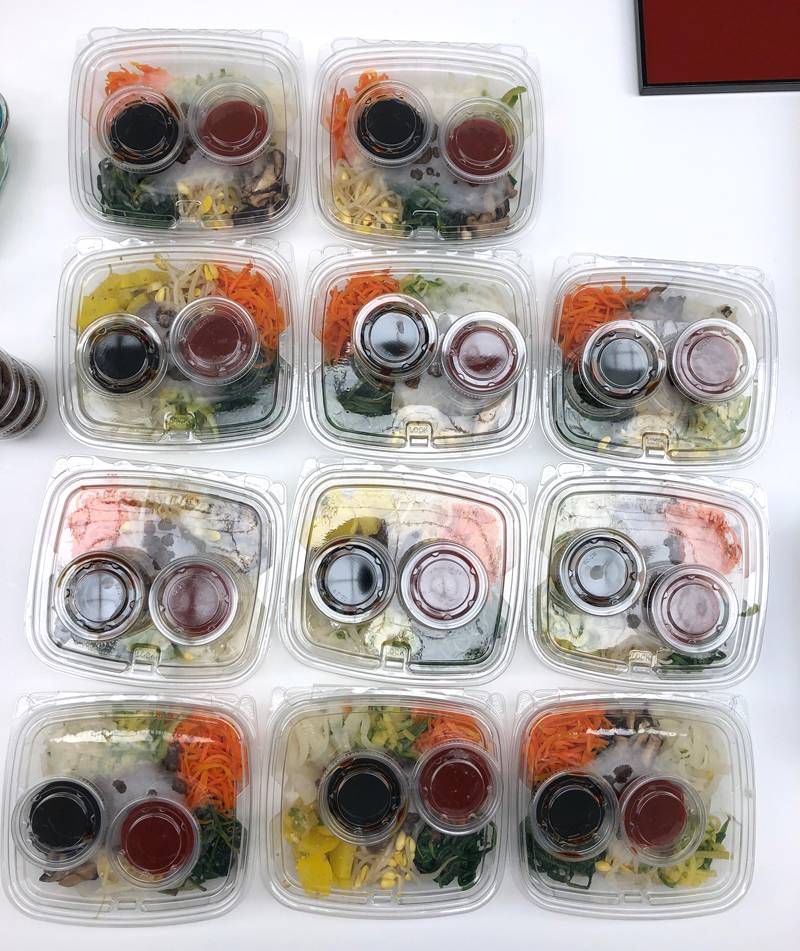
I’m excited to try out my new cooking knowledge at home, to spend more time browsing the aisles at Green Onion, and to continue to support Japan House and its programs. The final installment of this cooking series is sold out, but do keep an eye out for future programs at Japan House.
Photos by Jessica Hammie








